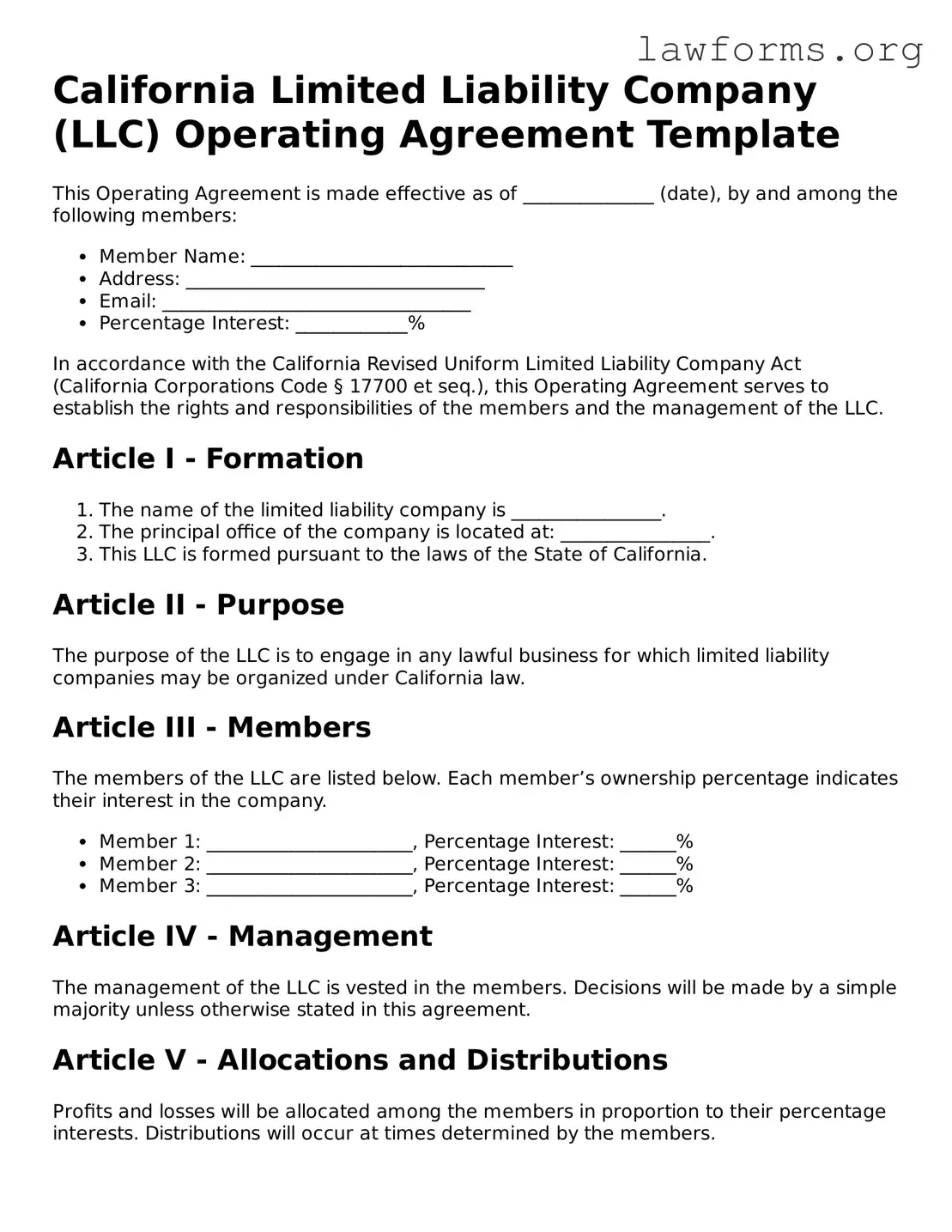California Limited Liability Company (LLC) Operating Agreement Template
This Operating Agreement is made effective as of ______________ (date), by and among the following members:
- Member Name: ____________________________
- Address: ________________________________
- Email: _________________________________
- Percentage Interest: ____________%
In accordance with the California Revised Uniform Limited Liability Company Act (California Corporations Code § 17700 et seq.), this Operating Agreement serves to establish the rights and responsibilities of the members and the management of the LLC.
Article I - Formation
- The name of the limited liability company is ________________.
- The principal office of the company is located at: ________________.
- This LLC is formed pursuant to the laws of the State of California.
Article II - Purpose
The purpose of the LLC is to engage in any lawful business for which limited liability companies may be organized under California law.
Article III - Members
The members of the LLC are listed below. Each member’s ownership percentage indicates their interest in the company.
- Member 1: ______________________, Percentage Interest: ______%
- Member 2: ______________________, Percentage Interest: ______%
- Member 3: ______________________, Percentage Interest: ______%
Article IV - Management
The management of the LLC is vested in the members. Decisions will be made by a simple majority unless otherwise stated in this agreement.
Article V - Allocations and Distributions
Profits and losses will be allocated among the members in proportion to their percentage interests. Distributions will occur at times determined by the members.
Article VI - Books and Records
The LLC shall maintain complete and accurate books and records of its business and affairs. Members have the right to access these records as permitted by California law.
Article VII - Indemnification
The LLC shall indemnify to the fullest extent permitted by law any member or manager from any loss, liability, or damage arising from their actions on behalf of the LLC.
Article VIII - Amendments
This Operating Agreement may only be amended or modified by a written agreement signed by all members.
Article IX - Governing Law
This Operating Agreement shall be governed by and construed in accordance with the laws of the State of California.
IN WITNESS WHEREOF, the members have executed this Operating Agreement effective as of the date first written above.
- _____________________________ (Member’s Signature)
- _____________________________ (Member’s Signature)
- _____________________________ (Member’s Signature)
Date: ________________
